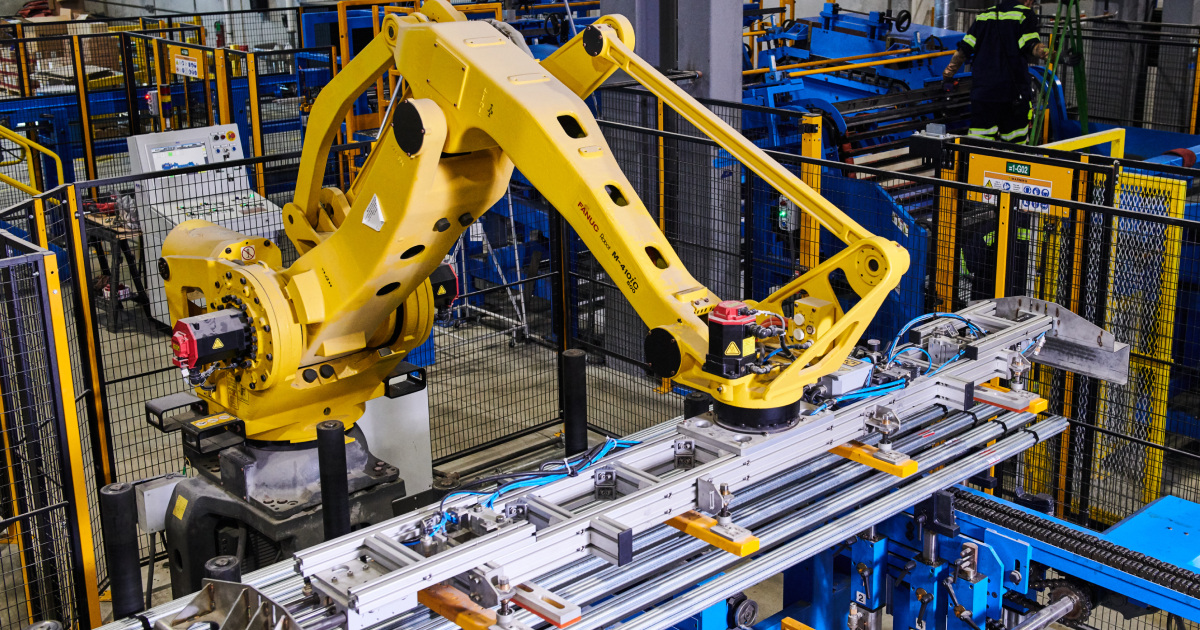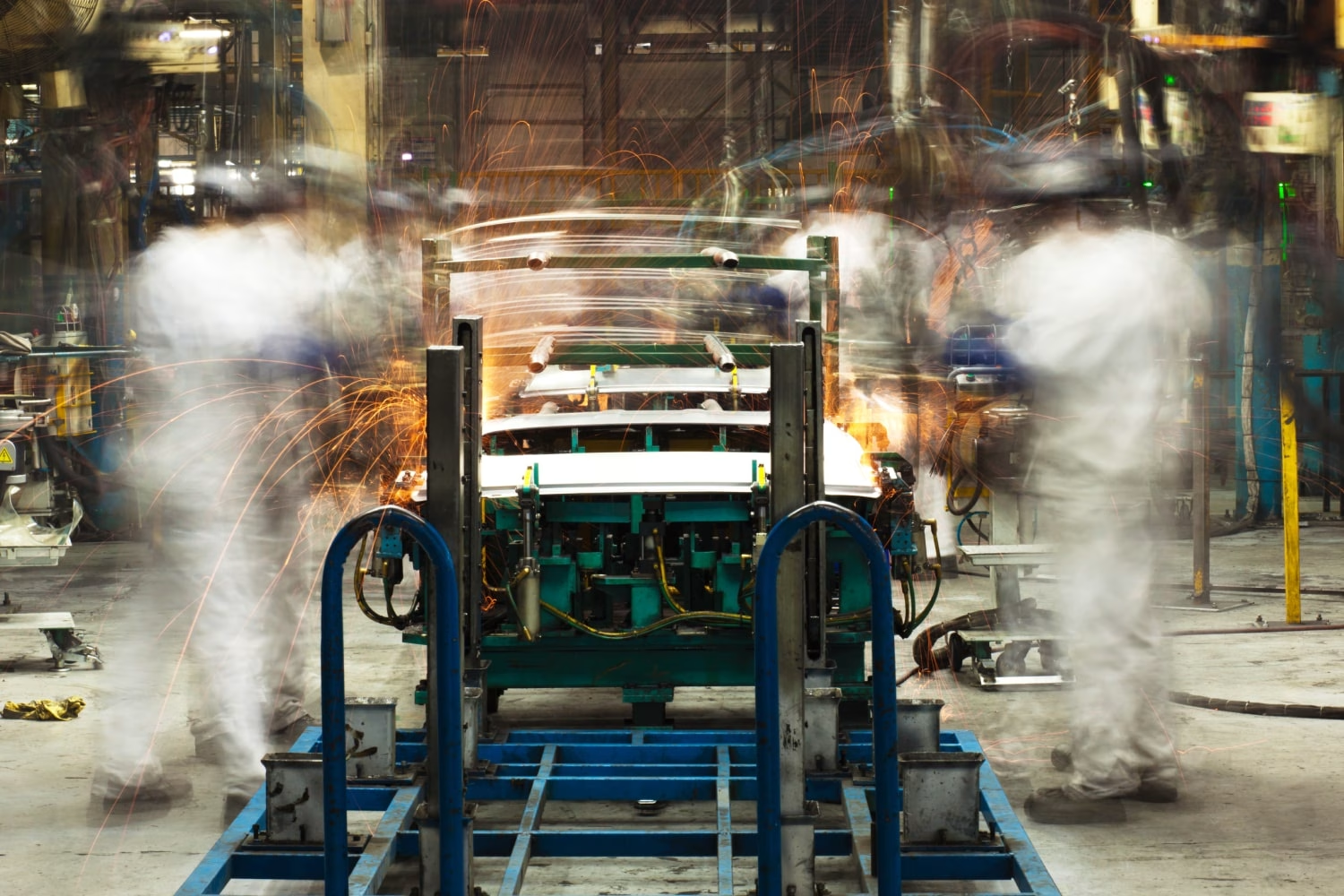How Content Marketing Can Change the Perception of Manufacturing

Share this story
In an industry often perceived as outdated, manufacturing has undergone a significant transformation over the past few years. However, the narrative surrounding it has yet to catch up. Enter content marketing — a powerful tool that can reshape public perception and showcase the true face of modern manufacturing. Here’s how it can be done.
Debunk the rusty myths about manufacturing.
The image of manufacturing as a dirty, dangerous job is a relic of the past — or it should be, at least. Today’s manufacturing facilities often highlight safety and cutting-edge technology. And it’s time to get the word out.
“What we’ve got to get better at is communicating the amazing opportunity that manufacturing represents today for all levels of the org,” says Otto Hektor, a managing director at MX. “This isn’t dirty old shops anymore. This is, in many regards, pristine halls of innovation.”
Changing the perception of manufacturing is crucial — especially when trying to attract younger talent. Modern manufacturing needs to be seen as a dynamic and innovative field with vast opportunities.
Show the younger generations manufacturing is cool.
Gen Zers and millennials, more diverse and purpose-driven, are key to the future of manufacturing. They seek meaningful work and want to make an impact on their companies and society at large. “They’re looking for things that might be more about the purpose behind what they’re doing,” says Patrick Brennan, a senior strategist at MX. “They want to contribute to the world in a big way.”
To appeal to this demographic, content marketing should highlight stories of individuals making a difference in the industry and society. Showcase the diverse workforce, including the greater number of women in manufacturing today, and the significant impact these individuals have on their communities and the world.
Put a human face on the industry.
Manufacturing often comes across as cold and sterile. To combat that, set out to humanize your brand by having employees share their stories and experiences. Consider formats like social media shorts, behind-the-scenes video tours and employee spotlight articles. Ask questions like: What was your proudest moment at work? How do you feel you make an impact on the company’s overall mission? What surprised you most about working at the company? This approach can showcase the dynamic and enjoyable aspects of working in manufacturing — and highlight the authentic human faces that make up the brand.
“And I would just say — this goes across the board — don’t be afraid to have a little fun,” says Cyndee Miller, VP of content at MX.
Incorporating humor and personality into your content can make your brand more relatable and attractive.
Showcase manufacturing’s innovation.
Innovation is at the heart of modern manufacturing, yet this message hasn’t fully penetrated public consciousness.
Graduates from top business schools flock to the Bay Area, eager to join the ranks of major tech companies.
“But the reality is you’ve got managers in manufacturing companies being as innovative and tech-centric as you’re getting in those tech companies,” Hektor says. “And in terms of workers on the line, same thing. You’re not just standing on a line making widgets all day. These roles have even evolved to becoming almost like software engineers to troubleshoot when something’s going on so you can get the line back up and running.”
The paradigm has shifted, but awareness is lagging.
Content marketing can shine a spotlight on the evolution of manufacturing. Highlight this new workplace, the career opportunities available, and some of the technological innovations that are happening. You could have a female employee talking about how she paved a career path for herself in the manufacturing industry. You could create a video about additive manufacturing that shows how cutting edge your company is so that young people want to be a part of it.
“You can adopt really futuristic, forward-looking things in this industry. And I think that’s the part that sometimes gets missing,” Miller says.
Keep it real by highlighting authenticity.
In today’s market, authenticity is nonnegotiable. As Hektor succinctly puts it: “If you’re not authentic, you’re toast.”
It’s all the more vital, given that 64% of B2B buyers are now Gen Z or millennial. “Younger generations demand that brands have a stance on important issues like sustainability,” Brennan says.
When it comes to environmental responsibility, manufacturing brands must have a strong point of view — and back it up in practice.
“We’ve all seen examples of greenwashing in the industry, and it sets off a lie detector immediately,” Brennan warns.
Consumers can easily detect insincerity, and it can severely damage a brand’s reputation. You can’t just pay lip service to the trend du jour.
“Those are commitments that will stand for the life of the company. So you need to set the course, make sure you can deliver across business cycles and personnel cycles,” Hektor says. “The public is happy to call us out on BS if there’s BS. And then it’s out of our control — and you can’t get Pandora back in the box.”
This is all the more difficult in this era of AI, where content can be churned out quicker than an assembly line. Everything ends up sounding the same, and it’s easy to claim that a company is ethical without offering real proof points.
Your content marketing program should focus on creating high-quality, fact-based content — preferably written by journalists — that demonstrates genuine commitment to sustainability and other values.
“You’re speaking in an authentic way to the customer,” Miller says. “You’re not just talking about your brand. You’re showing how this is going to address their specific pain points and you’re there for them. And it’s a really trusted form of information, versus something that somebody typed a prompt in and got a magical story.”
By prioritizing the audience’s perspective, you can create content that’s not only relevant but also highly engaging — and it won’t come across as overly promotional.
“The big difference here with content marketing is that you’re really putting the focus on the audience versus the brand,” Miller adds. “The brand is dovetailed in there, but really you’re looking to answer what the audience needs.”
Understand your audience—and put them first.
One of the core tenets of content marketing is having an audience-first approach. But that’s made all the more difficult in the manufacturing space. Challenge number one: understanding the diverse range of stakeholders in the manufacturing process, from internal teams to distributors to end users.
“The data shows that marketers [within manufacturing] have the biggest trouble understanding these audiences,” Brennan says. “We don’t have that one-to-one connection that we might have in other categories. And that makes it really hard to understand how we’re going to talk to people at each stage of the customer journey.”
It’s worth the effort getting to know your audience, though. Tried-and-true stakeholder interviews are your best bet, he adds — but they’re not always possible.
That’s where social listening and AI tools can help you gather insights to tailor your content to address specific pain points and needs. This approach ensures that your messaging resonates with your audience, building trust and fostering deeper connections.
Revamping the Perception of Manufacturing
Content marketing holds the key to transforming the outdated perceptions of manufacturing. By showcasing innovation, appealing to younger generations, humanizing your brand, emphasizing authenticity and adopting an audience-first approach, you can reveal the true face of modern manufacturing. It’s time to forge a new narrative, one story at a time.
Learn more about the biggest challenges manufacturing companies face — and how content marketing can help. Watch the full roundtable video now.



